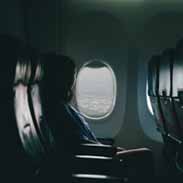AP World History Chapter 22 Key Terms – Flashcards
Unlock all answers in this set
Unlock answersquestion
Asian sea trading network
answer
Divided, from West to East, into three zones prior to the European arrival: an Arab zone based on glass, carpets, and tapestries; an Indian zone, with cotton textiles; and a Chinese zone, with paper, porcelain, and silks.
question
Goa Ormuz
answer
...
question
malacca
answer
Port city in the modern Southeast Asian country of Malaysia, founded about 1400 as a trading center on the Strait of Malacca. Also spelled Melaka. (p. 387)
question
batavia
answer
Fort established in 1619 as headquarters of Dutch East India Company operations in INdonesia; today the city of Jakarta.
question
Treaty of Gijanti (1757)
answer
Reduced the remaining independent Javanese princes to vassals of the Dutch East India Company; allowed the Dutch to monopolize Java's coffee production.
question
Luzon
answer
Northern island of Philippines; conquered by Spain during the 1560s; site of major Catholic missionary effort.
question
mindanao
answer
the second largest island of the Philippines at the southern end of the archipelago
question
Francis Xavier
answer
This was a man who helped Ignatius of Loyola to start the Jesuits. He also was famous for his number of missionaries he went on to promote Christianity
question
Robert Di Nobli
answer
Italian Jesuit missionary; worked in India during the early 1600s; introduced strategy to convert elites first; strategy later widely adopted by Jesuits in various parts of Asia; mission eventually failed.
question
hongwu
answer
First Ming emperor in 1368; originally of peasant lineage; original name Zhu Yuanzhang; drove out Mongol influence; restored position of scholar-gentry
question
Macao and Canton
answer
The only two ports in Ming China where Europeans were allowed to trade.
question
The water margin, Monkey, and the golden Lotus
answer
well-known as one of the four greatest Chinese novels in history; tells stories of a group of heroes,who stand for different classes of people daring to struggle against the evil.
question
Zhenghe
answer
Chinese admiral who led seven overseas trade expeditions under Ming emperor Yunglo between 1405 and 1423; demonstrated that the Chinese were capable of major ocean exploration.
question
Matteo Ricci and Adam Schall
answer
Jesuit scholars at the Ming court; also skilled scientists; won few converts to Christianity.
question
Chongzhen
answer
Last of the Ming emperors; committed suicide in 1644 in the face of a Jurchen invasion of the Forbidden City at Beijing.
question
Manchus
answer
Northeast Asian peoples who defeated the Ming Dynasty and founded the Qing Dynasty in 1644, which was the last of China's imperial dynasties.
question
Nobunaga
answer
(1534-1582) Japenese daimyo; first to make extensive use of firearms; in 1573 deposed last of Ashikaga shoguns; unified much of central Honshu under his command
question
Toyotomi Hideyoshi
answer
General under Nobanga; suceeded as leading military power in Japan; continued efforts to break power of daimyos; constucted a series of military alliances that made him the military master of Japan in 1590; died in 1598.
question
Tokugawa Ieyasu
answer
Vassal of Toyotomi Hideyoshi; succeeded him as most powerful military figure in Japan; granted title of shogun in 1603 and established Tokugawa Shogunate; established political unity in Japan
question
edo
answer
a member of a west African people living in the tropical forest region of southern Nigeria
question
deshima
answer
Island in Nagasaki Bay; only port open to non-Japanese after closure of the islands in the 1640s; only Chinese and Dutch ships were permitted to enter.
question
School of National learning
answer
18th-century ideology that emphasized Japan's unique historical experience and the revival of indigenous culture at the expense of Confucianism and other Chinese influences.



